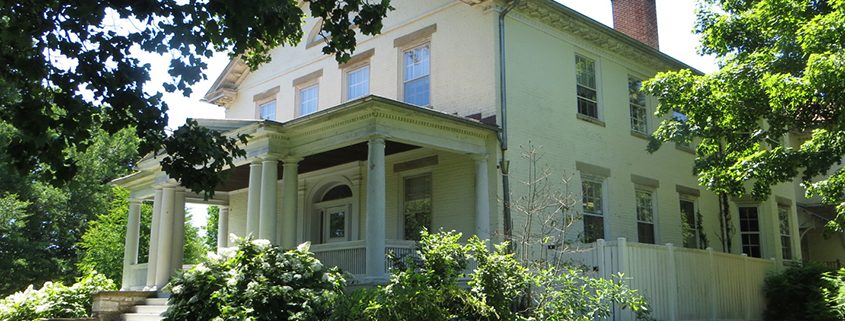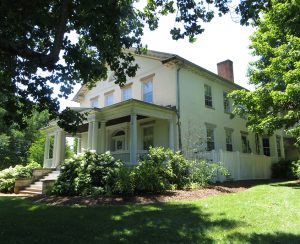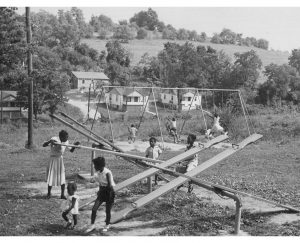

Montgomery Hall Park
Recently listed on the Virginia Landmarks Register of Historic Places, Montgomery Hall Park is noted for its architectural character, as well as its significant ties to the African American community in Staunton and statewide. John Howe Peyton, a Princeton-educated lawyer who moved to Staunton in 1808, originally owned the 800 acre plantation, which consisted of wheat as the cash crop, orchards, and livestock. A contemporary of Thomas Jefferson and James Madison and other leaders of the young Republic, Peyton was a recognized lawyer, statesman, and education proponent. He built Montgomery Hall in 1822 for his second wife, Ann Montgomery Lewis. By 1902 the property had dwindled to 150 acres and the new owners, Frank and Emma Walter, commissioned local architect T.J. Collins to design an addition. Before it could be built in 1906, the house was destroyed by fire. The Walters had Collins design a new house, based somewhat on the form of the original and built on the former foundation.
The City purchased the 148-acre property in 1946, and designated it as a park for the local African American community, giving them full control of its operation and a small operating budget. The Montgomery Hall Park Recreation Committee was created and quickly established park rules, programs and fees to better fund the facility. By the late 1940s, newly added facilities included a swimming pool, playgrounds, horseshoe pit, and other recreational features. Montgomery Hall Park was held in high esteem by the local black community, and activities for athletics, education, and religion were coordinated between the Park, the African-American churches, and the Booker T. Washington School. The park and its main building were a hub of social life for the community, hosting dances, swimming lessons, croquet, card games, flower shows, and bowling. As one of only a few designated African-American parks with such superb amenities in Virginia, the park gained statewide recognition. Groups from Roanoke to Clifton Forge, as well as Charlottesville and Lynchburg made the day trip to Staunton, some even camping overnight. Visitation during the summer season from June to Labor Day often reached 18,000.

Early image of Montgomery Hall Park playground.
The Montgomery Hall Park Recreation Committee ran the park and served as liaison between the African-American community and city government until 1969 when it was integrated into the rest of the city park system. Today, Montgomery Hall is home to the Department of Parks and Recreation offices, and the park has been expanded and improved to include modern playgrounds, a swimming pool complex, picnic shelters, walking trails, basketball and tennis courts, and several playing fields, and parking lots. In 2002, the Staunton City Council dedicated the Montgomery Hall Park Administration Building in honor of Mrs. Irene Givens, who had dedicated over 25 years of service to the park and its programs prior to 1970.
Working with the City of Staunton, Frazier Associates conducted research and wrote the architectural description, as well as coordinated and submitted the nomination materials to the Virginia Department of Historic Resources. In-depth historical research for the nomination was provided by Nancy Sorrells. Dennis B. Blanton and the James Madison University Department of Sociology and Anthropology conducted the archeological survey of the property. Historic Staunton Foundation provided copies of drawings from their T. J. Collins archives. The property is currently under consideration for listing on the National Register of Historic Places.
To view additional photographs on our website click here.














